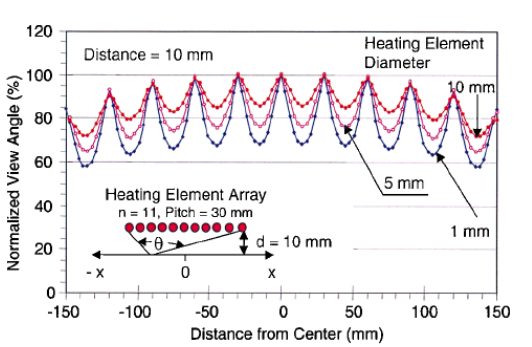A resistively heated, vacuum- and atmospheric-pressure-compatible, single-wafer furnace (SWF) system is designed to improve the operational flflexibility of conventional furnaces and the productivity of single-wafer rapid thermal processing (RTP) systems. The heat source design and system operation concepts are described. The temperature measurement/control techniques and thermal characteristics of the heat source are described. The heat transfer mechanism between the heat source and Si wafer is discussed. Temperature and process uniformity in SWF were demonstrated in TiSi formation, implant annealing and thin-oxide formation. The defect-generation phenomenon in Si wafers during atmospheric pressure RTP in a SWF system is investigated as a function of temperature, process time, wafer handling method and speed. Highly repeatable slip-free RTP results were achieved in 200-mm-diameter Si wafers processed at 1100◦C for 60 s (up to 5 times) through the optimization of the wafer handling method and speed.
Horizontal batch furnaces have been used in thermal processing applications such as dopant diffusion, annealing, oxidation, nitridation and thermal chemical vapor deposition (CVD) since the inception of semiconductor industry. Vertical batch furnaces were then introduced to improve the temperature uniformity and effificiency of clean room space usage. Both types of batch furnaces are widely used and able to meet the requirements for many thermal processing applications, even for 0.18µm gate technology.
We have designed a single-wafer furnace (SWF) with a vacuum load lock to overcome the drawbacks of batch furnaces and single-wafer RTP systems.7, 8) In this paper, the design concept and thermal behavior of the heat source are described in detail. Theoretical calculation results on heat source confifigurations are discussed. Wafer temperature characterization results during ramping-up and ramping down as well as typical process results using the heat source are described. The defect-generation phenomenon in 200-mm-diameter Si wafers during RTP in a SWF and the defect elimination method is discussed. Slip-free RTP process results are obtained by process parameter optimization.

Fig1
The heating element confifiguration plays a signifificant role in the temperature uniformity of the heat source as well as that of the wafer. Linear or circular arrays of heating elements are widely used as heat sources in thermal processing equipment such as furnaces and RTP systems. To obtain reasonable temperature uniformity on wafers, multiple zone power control and/or a wafer rotation mechanism are frequently used for heat loss compensation in commercially available systems.
Infrared images of a spiral heater without a heat diffuser and one with a heat diffuser (2-mm-thick SiC disk) are shown in Figs. 4(a) and 4(b). The distance between the heating element and the SiC heat diffuser is maintained at 2 mm. The average heating element temperature is estimated to be 700◦C. A bare spiral heater shows a very large spatial temperature nonuniformity while a spiral heater with a SiC disk (heat diffuser) shows better temperature uniformity at a lower average temperature. Temperature uniformity on the SiC disk can be improved further by increasing the thickness of the SiC disk because a thicker SiC disk diffuses heat more effificiently. A nearly isothermal environment where the wafer is processed can be created by using a combination of discrete heating elements and a SiC heat diffuser.
上一篇: 两步电镀铜工艺
下一篇: 使用InGaN微LED的亚微光光刻技术